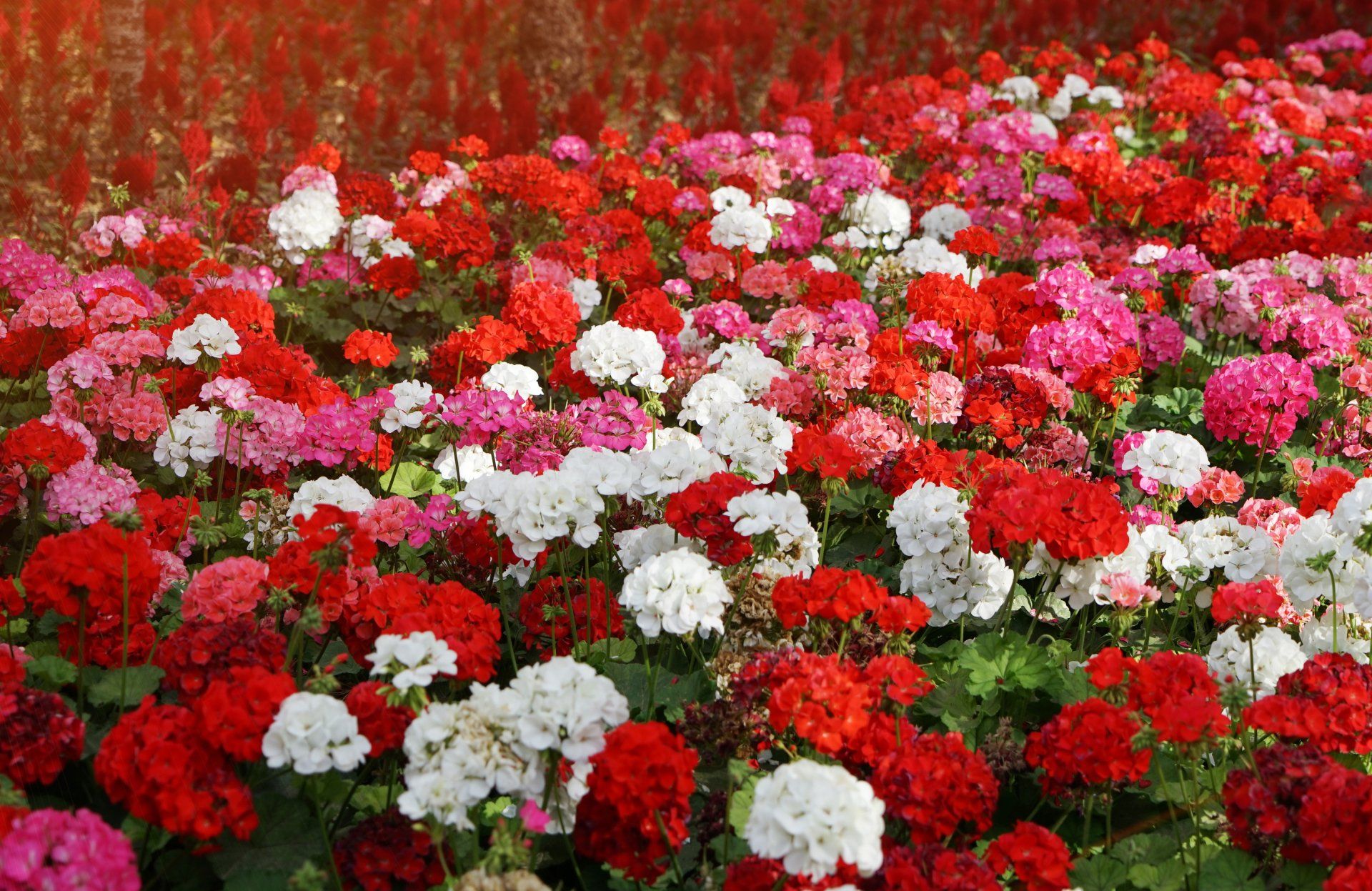Geranium / Pelargonium
KEY INFORMATION
Height: to 40cm
Spread: to 35cm
Tender perennial
Full sun
Germination: 3 - 21 days
VARIETIES AVAILABLE FROM COLLIE FLOWERS
SOWING & GROWING SCHEDULE
Sow Indoors: December to March
Sow Outdoors: n/a
Plant Out: May to June
Blooms: June to October

Growing Guide
It may be over 150 years since the annual geranium was reclassified as a pelargonium, but for many gardeners, me included, they're still referred to as geraniums. The seeds we sell are strictly Pelargoniums, but like many gardeners we were brought up with their misclassification and so we call them Geraniums. While geraniums and pelargoniums are related, both being members of the Geraniaceae family, there are various distinct differences between the two in, growth, appearance, and seed dispersal technique.
Pelargoniums are low-maintenance, high-performing, good-looking tender perennials. A really beautiful, bushy pelargonium filling a feature pot during the summer is a wonderful thing to see – and useful, too, as the scented leaf varieties can be used in cooking, teas and cordials, and all pelargoniums can be used in stunning posies.
There are varieties grown for their flowers that bring vibrant colour from June until October, and there are the scented-leaf pelargoniums that, when you brush past them, fill the air with scent, and then there are wonderful ivy-leaved pelargoniums with a trailing habit that are suited to hanging baskets and window boxes.
Sow between December and March in pots or trays of moist seed compost and cover with a very fine sprinkling of compost or vermiculite. Place in a propagator or warm place, do not exclude light as this helps germination. Keep the surface of the compost moist but not waterlogged.
When large enough to handle, transplant seedlings into 7.5cm pots or trays. Gradually acclimatise to outdoor conditions for 10-15 days before planting out after all risk of frost, 30cm apart.
Deadhead regularly to keep the plants in flower for as long as possible.
TOP TIPS
Pelargoniums can be grown as bedding plants outside during the summer months, but they are not hardy so must be brought inside before the onset of frost. Take care to water sparingly during the winter, when the plants are undercover. If kept at 7-10ºC (45-50ºF), plants may continue to grow right through the winter. Otherwise cut back your plants by two-thirds and keep them almost dry until they begin to shoot in the spring, when regular watering can start again.
Propagating pelargoniums from cuttings is easy. If you propagate them rather than growing on last year’s plants, you'll have more floriferous and stronger plants. Start propagating pelargoniums in September, while plants are in an active stage of growth. They will root very quickly.
- To do this, take a cutting that’s about (1½-3in) long using a very sharp knife. Remove any lower leaves or flower buds and the leader (the apical shoot). Insert the cuttings around the edge of a pot filled with a mix of two-thirds peat free multipurpose compost to one-third grit.
- Do not cover your pelargoniums (as you might when propagating other tender perennials). Leave them somewhere warm, ideally on a heated mat or warm windowsill, and keep the compost moist.
- They should root within two to three weeks. You'll know they have done so by new growth at their tips and new white roots at the base of the pot.
- Keep them frost free and just moist through the winter, and pot them on into individual pots in early spring. They'll grow fantastically and you'll have lots of plants to put out in the garden in summer.
